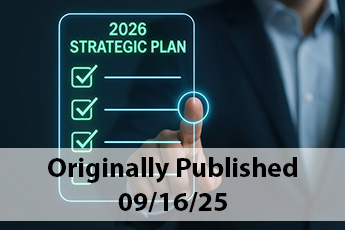Pew Research finds the social media sites US adults use online or on their smartphone most actively are: YouTube (73%), Facebook (68%), Instagram (35%), Pinterest (29%), Snapchat (27%) and LinkedIn (25%). By age group, those who say they use social media are as follows: age 18 to 29Ys (88%), 30 to 49Ys (78%), 50 to 64Ys (64%) and 65Ys or older (37%). Stay socially connected out there.
Speaking of social activities, as we saw in our weekly coverage of community banks for Community Banking Month in April, many community institutions pride themselves on having a strong relationship with their communities. Yet, if you're donating reactively (when asked), you may be missing out on an opportunity to do good proactively (before asked), while expanding your brand and enhancing your relationships.
A strong relationship with the right charities can help a community institution demonstrate to its customers that it is responsible, involved, and trustworthy. Charitable connections can also nourish a bank's internal culture by giving employees extra ways to make a difference in the community, which in turn can boost recruitment and retention.
To build brand-enhancing charitable relationships, you'll need to search for charitable partners that align with your bank's culture and customer attitudes. Maybe your bank is committed to serving agricultural families. That might translate perfectly into support for local 4H clubs, for example.
A charity that resonates with a personal situation can be another genuine choice. Several bank employees might have children with autism, or a staff member might suffer from a serious medical condition. Give customers and employees a vote in the organizations you choose and the donations you make. The more they are personally invested, the more buy-in your charitable efforts will have.
Vet all charities before you commit, of course, because your brand will be associated with theirs. Web sites that include Charity Navigator, CharityWatch, and the Better Business Bureau's Wise Giving Alliance are online sources for information about a wide variety of charities.
Also take time to learn about a charity's scope, structure, and mission. Know the all-important matter of how much money they put toward that mission. Does the bulk of the money reach the causes that the charity serves? Would you be proud to be associated with this charity?
Fundraising is a time-honored way to support any charity. If it's appropriate, find ways for staff members to help your chosen cause. Hosting an event to benefit a charity is a popular way.
You could also build fundraising into your business model. For every new savings account opened, for instance, you might give $10 to your chosen charity. Just make sure your staff can easily follow through with the proper process and regulations.
Start small, with a test campaign. Define your timeline, geographic area and goal. When you're done, evaluate what worked and what didn't. Was the charity easy to work with? Did your employees and customers respond positively? If so, maybe expand that relationship and if not, move on.
Revisiting charitable connections and thinking through what you want and what they want can be a good summer project for someone perhaps, as it keeps you socially involved in the community and with your customers.




